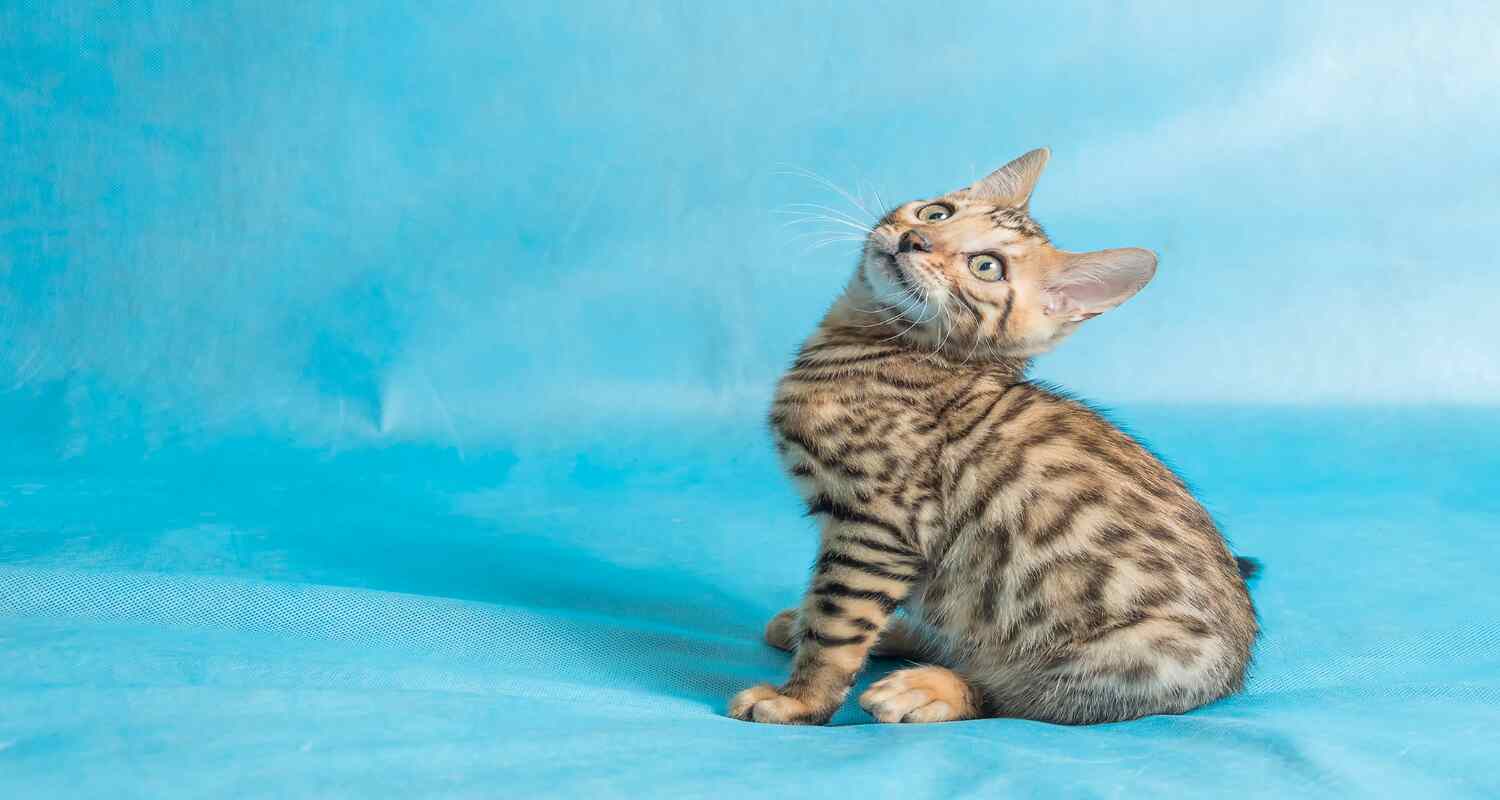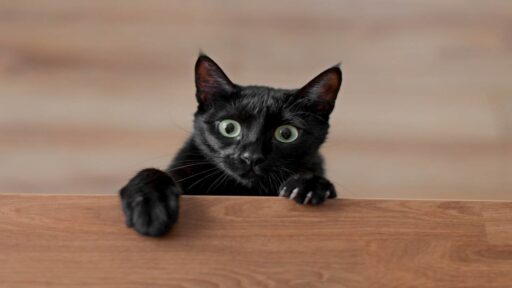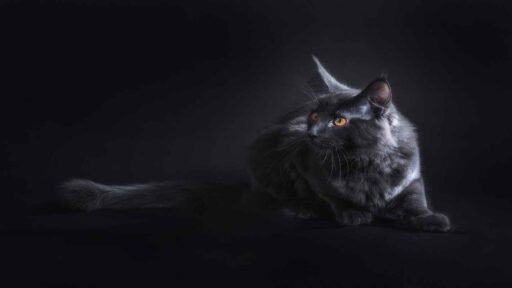White Bengal cat is a unique and striking breed known for its beautiful coat coloration. Bengal cats, in general, are recognized for their distinctive spotted or marbled patterns, but the White Bengal cat stands out due to its predominantly white fur.
The breed’s origin can be traced back to the crossbreeding of domestic cats with the Asian leopard cat, resulting in the creation of the Bengal breed. White Bengals may still retain some of the typical Bengal characteristics, such as their sleek and muscular build, as well as their playful and energetic nature.
Their coat is predominantly white, but they may have spots or marbling in shades of light gray or cream. The contrast between the white fur and the darker markings enhances their beauty. The striking appearance of White Bengal cats has made them popular among cat enthusiasts and pet owners.
In addition to their unique appearance, White Bengals are known for being social, intelligent, and active cats. They enjoy interactive play, mental stimulation, and the company of their human companions. Proper care, attention, and a stimulating environment are essential to keep these cats happy and healthy.
If you’re considering getting a White Bengal cat as a pet, it’s important to provide them with a balanced diet, regular veterinary check-ups, and opportunities for physical and mental exercise.
White Bengal cat Characteristics
White Bengal cats share many characteristics with the broader Bengal breed, but they are distinguished by their predominantly white coat. Here are some key characteristics of White Bengal cats:
- Coat Color: The most distinctive feature of White Bengal cats is their white coat. While the coat is primarily white, it may have spots, rosettes, or marbling in shades of light gray, cream, or even a faint tan. The contrast between the white fur and the markings adds to their visual appeal.
- Breed Origin: Bengal cats, including the White Bengal variety, originated from the crossbreeding of domestic cats with the Asian leopard cat (Prionailurus bengalensis). This gives them a unique appearance with wildcat-like markings.
- Build and Body: White Bengals have a sleek and muscular build, resembling their wild ancestors. They are medium to large-sized cats with a strong, athletic physique. Their long, lean bodies contribute to their agility and grace.
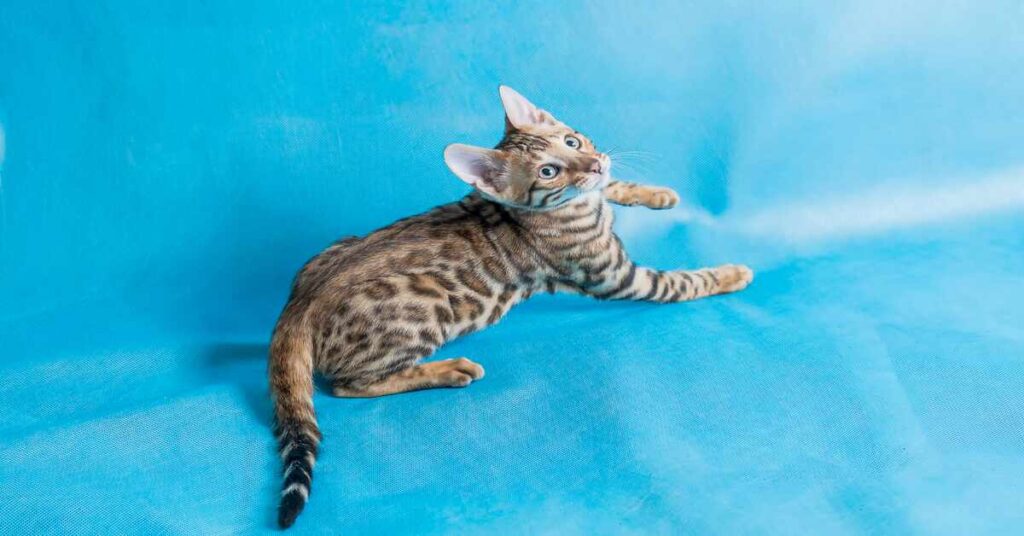
Mental characteristics
- Personality: White Bengal cats are known for their active and playful nature. They are intelligent, curious, and enjoy interactive play. These cats often form strong bonds with their human companions and may seek attention and affection.
- Social Behavior: Bengals, including the White Bengal variety, are generally social cats. They may get along well with other pets if introduced properly. However, they often prefer the company of their human family members and may become attached to a specific person.
- Energy Level: White Bengals are energetic and require regular exercise and mental stimulation. Interactive toys, climbing structures, and play sessions can help fulfill their need for physical and mental activity.
- Vocalization: While individual cat personalities vary, some White Bengals can be quite vocal. They may use various vocalizations to communicate with their owners, ranging from chirps and trills to meows.
- Grooming: Bengal cats, including White Bengals, usually have a short and luxurious coat that requires minimal grooming. Regular brushing can help reduce shedding and keep their coat in good condition.
- Health Considerations: Like all cat breeds, White Bengals can be prone to certain health issues, such as hypertrophic cardiomyopathy (a heart condition). Regular veterinary check-ups, a balanced diet, and preventive care are essential for their well-being.
Bengal cats are known for their playful and energetic personalities, as well as their sleek and muscular bodies.
White Bengal cat’s origins
The Bengal cat breed has an interesting and relatively recent origin. The Bengal breed was developed through selective breeding, involving the crossbreeding of domestic cats with the Asian leopard cat (Prionailurus bengalensis), a small wildcat found in Asia. The goal was to create a domestic cat with distinctive markings reminiscent of the leopard’s coat.
Here is a brief overview of the origins of the Bengal cat:
- Early Experiments: The initial efforts to create the Bengal breed can be traced back to the 1960s and 1970s. Cat enthusiasts and breeders, notably Jean Mill in the United States, began crossing domestic cats with the Asian leopard cat to incorporate the wildcat’s unique coat patterns into domestic cats.
- Foundation Cats: The early generations resulting from these crossings were termed “foundation cats.” These cats were usually F1 (first-generation) or F2 (second-generation) hybrids with a higher percentage of Asian leopard cat genetics. These foundation cats displayed wild-looking markings and traits.
- Development of the Breed: Over subsequent generations, breeders worked to domesticate the cats while retaining their distinctive appearance. Through careful selection and controlled breeding, the Bengal breed was established with a focus on preserving the desired coat patterns and overall appearance.
- Recognition and Acceptance: The Bengal cat was officially recognized as a breed by cat breeding associations in the 1980s. The breed gained popularity for its striking appearance and unique combination of wild and domestic traits.
- Modern Bengal Cats: Today, Bengal cats are recognized by cat registries worldwide, and they come in various colors and patterns, including the distinctive spotted and marbled coats. The breed has further diversified, with variations such as the White Bengal cat, which has a predominantly white coat.
Personality and treatment
Personality
Bengal cats, including White Bengals, are known for their distinctive personalities. Here are some common traits associated with their behavior:
- Playful and Energetic: Bengals are highly active and playful cats. They enjoy interactive play, climbing, and exploring their surroundings. Engaging them in stimulating activities helps channel their energy positively.
- Intelligent: Bengal cats are considered highly intelligent. They can quickly learn tricks, enjoy puzzle toys, and may even figure out how to open doors or drawers. Mental stimulation is essential to keep them engaged.
- Affectionate: Many Bengals are affectionate and form strong bonds with their human companions. They may enjoy being in close proximity, sitting on laps, or participating in family activities.
- Vocalization: Some Bengals can be quite vocal and may use a range of sounds to communicate. From soft chirps and trills to loud meows, they express themselves vocally.
- Curious: Bengals have a curious nature and may investigate everything in their environment. Providing them with a variety of toys, climbing structures, and hiding spots can satisfy their natural curiosity.
- Social: Bengal cats are generally social and may enjoy the company of other pets, including dogs if introduced gradually. However, they often prefer human interaction and may become attached to specific family members.
Treatments
Proper care and treatment are crucial for the well-being of White Bengal cats. Here are some guidelines:
- Balanced Diet: Provide a high-quality, balanced diet suitable for your cat’s age, weight, and health. Consult with your veterinarian to determine the best nutritional plan for your Bengal cat.
- Regular Veterinary Check-ups: Schedule regular veterinary check-ups to monitor your cat’s health and address any potential issues early on. Vaccinations, dental care, and parasite prevention are important aspects of routine veterinary care.
- Interactive Play: Engage your Bengal cat in interactive play sessions to fulfill their need for physical and mental stimulation. Toys that mimic hunting behaviors, such as feather wands, can be particularly enjoyable.
- Enriched Environment: Create an enriched environment with climbing structures, scratching posts, and puzzle toys. Bengals appreciate a stimulating environment that allows them to explore and exercise their natural behaviors.
- Grooming: Bengal cats typically have short coats that require minimal grooming. Brush your cat regularly to reduce shedding and keep their coat in good condition. Additionally, provide a litter box with suitable cat litter for their hygiene needs.
- Affection and Attention: Bengals thrive on human interaction and affection. Spend quality time with your cat, offer cuddles, and provide a comfortable and safe space where they can relax.
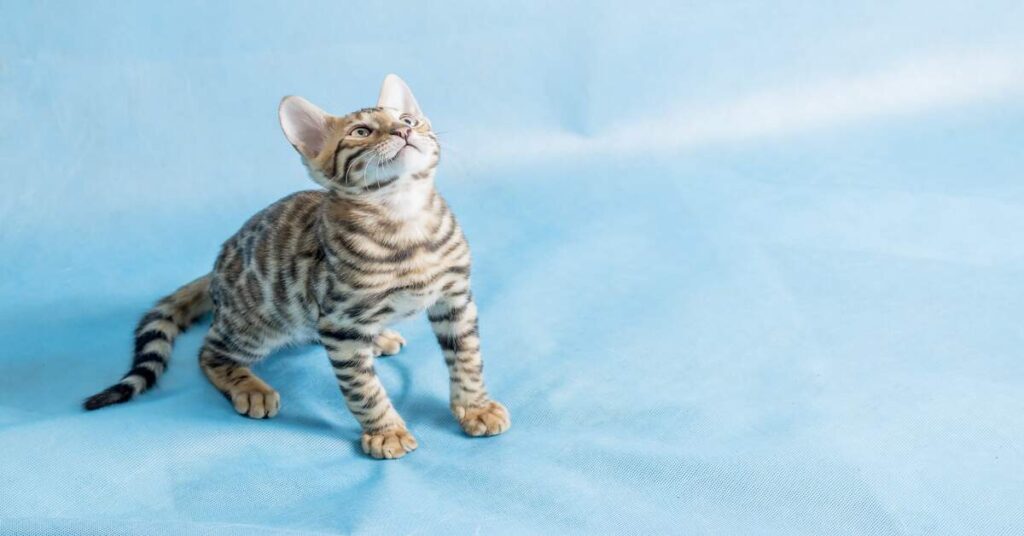
White Bengal cat history
The history of White Bengal cats is intertwined with the broader history of the Bengal cat breed. Bengals, including those with predominantly white coats, have a relatively recent and fascinating origin:
- Origins of the Bengal Breed: The development of the Bengal breed began in the 1960s and 1970s when breeders, notably Jean Mill in the United States, started crossing domestic cats with the Asian leopard cat (Prionailurus bengalensis). The goal was to create a domestic cat with striking wildcat-like markings.
- Foundation Cats: The early generations resulting from these crossings were termed “foundation cats.” These cats had a higher percentage of Asian leopard cat genetics, displaying distinct wildcat characteristics, including unique coat patterns.
- Selective Breeding: Breeders focused on selectively breeding cats to preserve the desired appearance while domesticating their temperament. The breeding efforts aimed to create a breed with stunning spotted or marbled coat patterns and a friendly, sociable nature.
- Recognition of the Bengal Breed: The Bengal cat breed was officially recognized by cat breeding associations in the 1980s. Over time, the breed gained popularity for its unique appearance and playful personality.
- Introduction of White Bengals: Within the Bengal breed, the introduction of the White Bengal cat involved selecting individuals with a predominantly white coat. These cats still retained the spotted or marbled patterns, but the white coloration became a prominent feature.
- Distinctive Appearance: White Bengals, with their predominantly white fur and contrasting markings, created a visually striking variant within the Bengal breed. Their appearance stands out among other color variations, contributing to their popularity.
- Modern White Bengal Cats: Today, White Bengal cats are recognized as a distinct color variation within the Bengal breed by cat registries. They share many characteristics with other Bengals but are specifically valued for their unique and beautiful coat color.
white Bengal cat FaQs
Are white Bengal cats rare?
white Bengal cats are considered relatively rare within the Bengal breed due to the specific genetic combination required for their predominantly white coat with desired markings.
How much are white Bengal cats?
The cost of white Bengal cats can vary significantly depending on factors such as lineage, pedigree, breeder reputation, and the specific markings and qualities of the individual cat. On average, you can expect to pay anywhere from $1,000 to $3,000 or more for a white Bengal cat from a reputable breeder. It’s important to note that high-quality breeders prioritize the health, genetics, and well-being of their cats, which can contribute to the overall cost. Additionally, prices may vary based on geographic location and market demand
Is a White Bengal cat very expensive?
Yes, white Bengal cats are generally considered to be one of the more expensive cat breeds. The cost of a Bengal cat can vary based on factors such as the cat’s lineage, pedigree, coat quality, markings, and the reputation of the breeder
What you should know before getting a white Bengal cat?
Before getting a Bengal cat, be prepared for their high energy levels, need for interactive play, and social nature. Consider their grooming needs, provide environmental enrichment, prioritize regular veterinary check-ups, choose a reputable breeder, and ensure you have space for them to explore and play.

